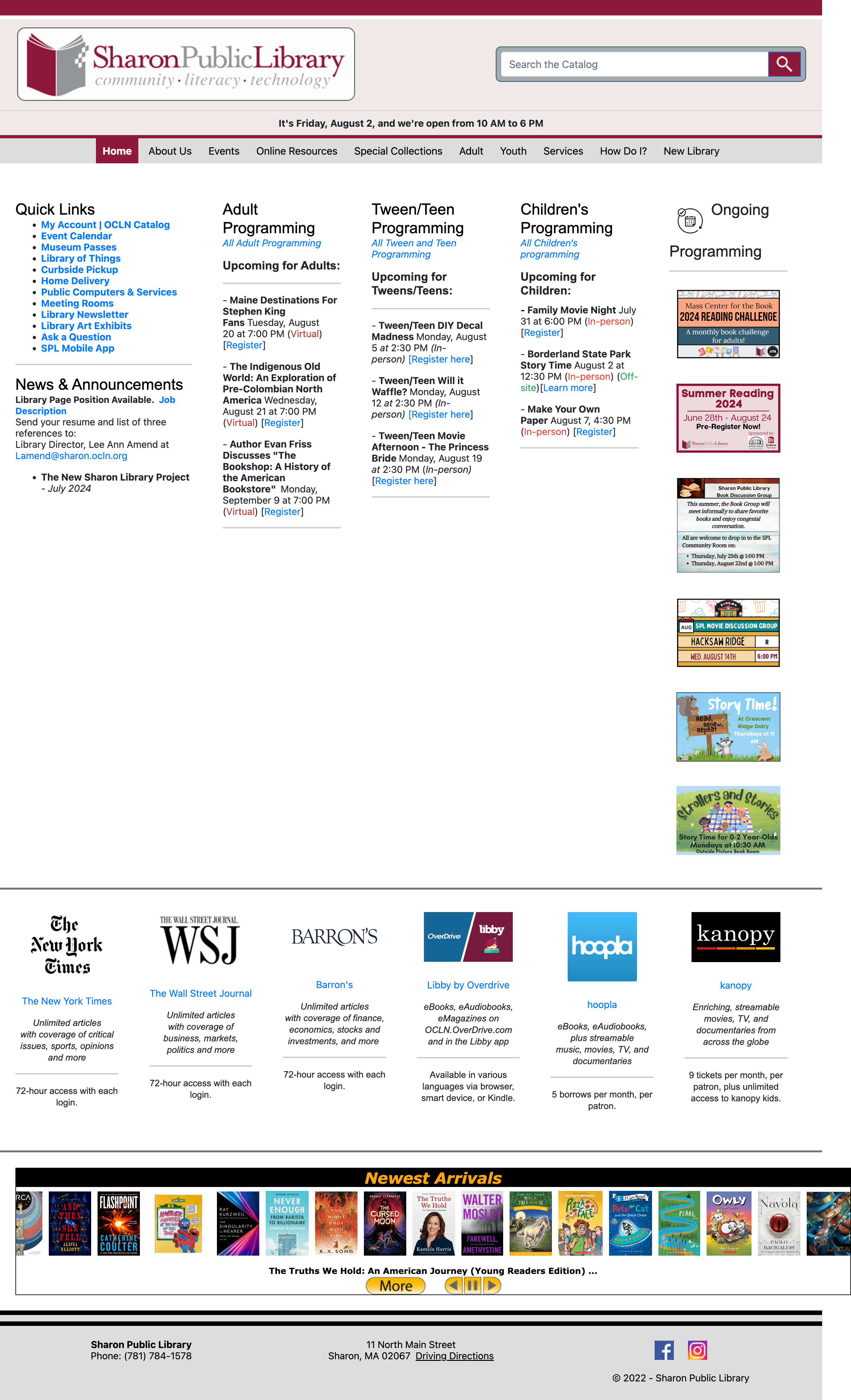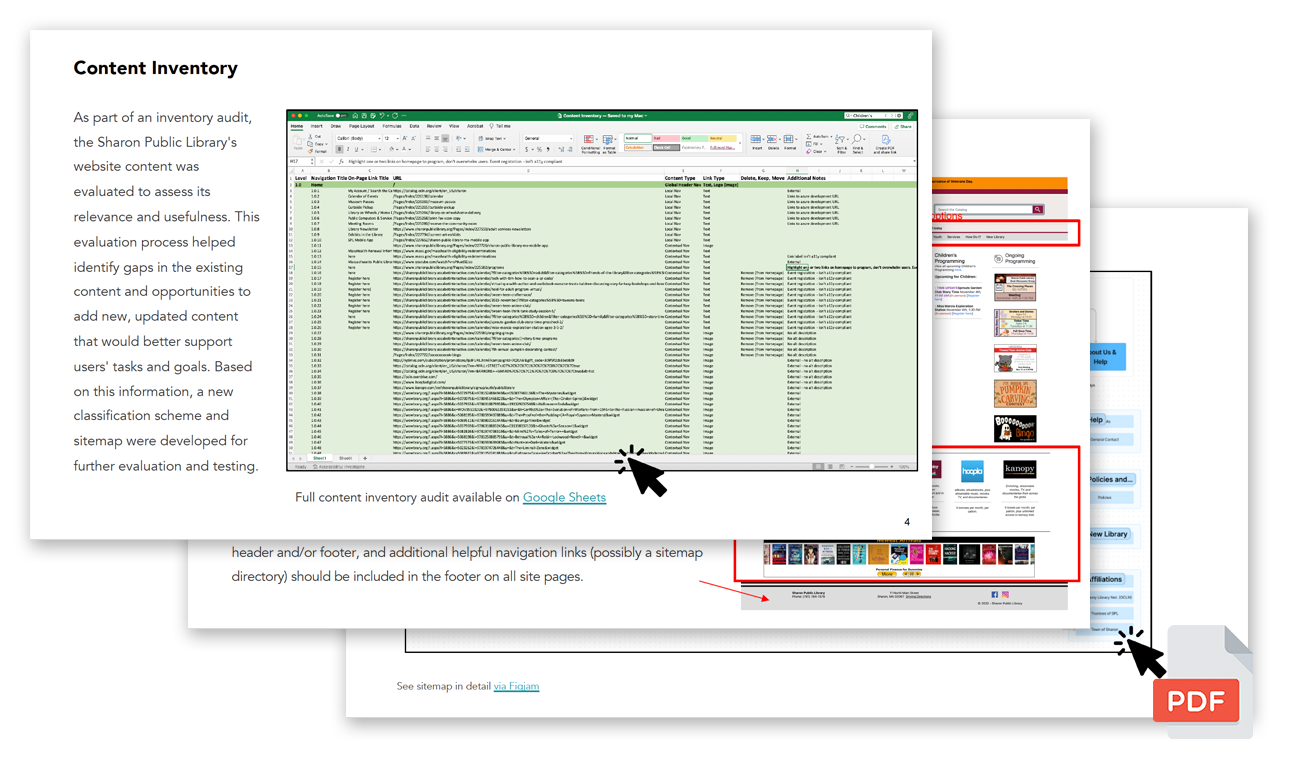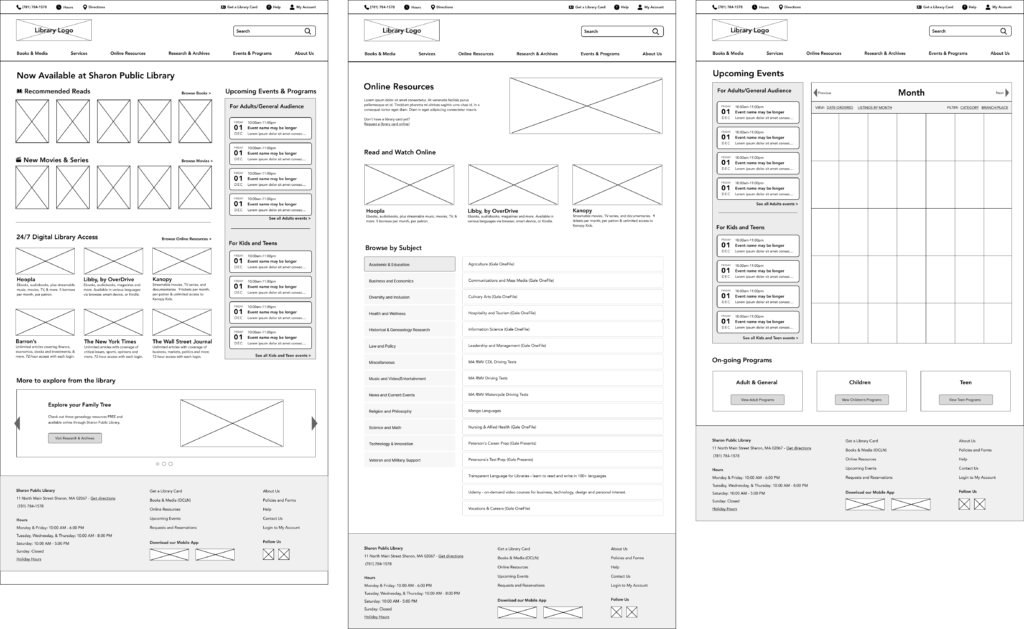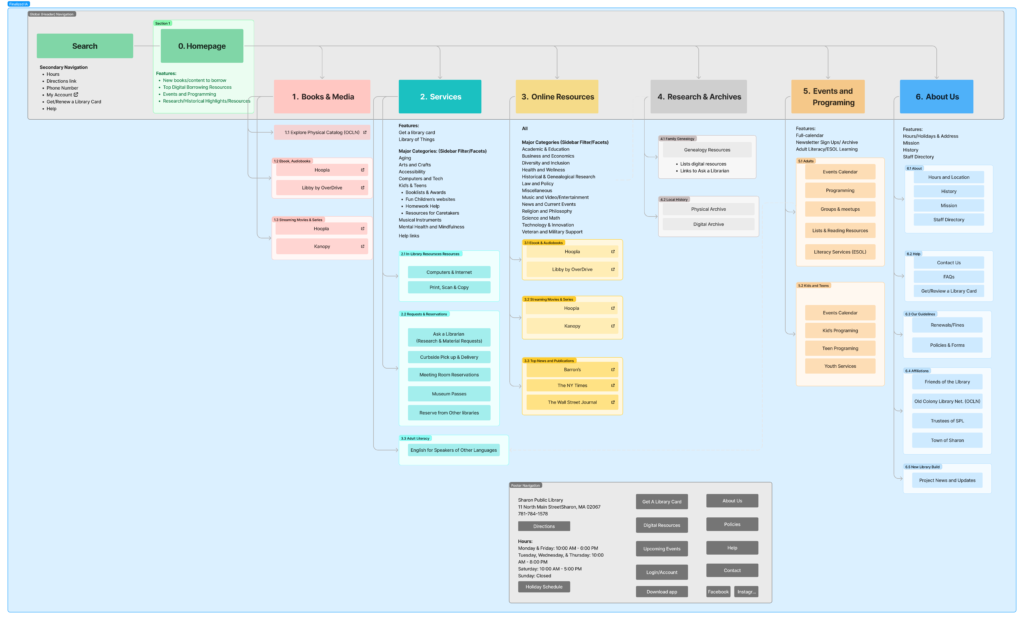Overview
Sharon Public Library in Sharon, PA, strives to serve the community by providing quality materials, programs, and services in-person and online through their website, sharonpubliclibrary.org, meeting informational, educational, cultural, and recreational needs.
This project aimed to gain insights into updating and optimizing Sharon Public Library’s website information architecture, including labeling, structural changes, and content enhancements.
Goal:
- Conduct user interviews to define the demographic of library patrons and their goals and objectives, determining the type of content users need or are interested in.
- Reorganize the site’s scheme and content hierarchy by performing evaluative and usability testing.
- Redefine the hierarchy and structure of the site’s information via a sitemap, workflows, and low-fidelity wireframes.
Role: Information Architect, UX Researcher & Designer
Methodology
Between October 23rd and November 4th, qualitative research was conducted to understand the demographics of individuals who use their local library’s website and their interests. The user interviews were conducted to gain a deeper understanding of who library website users are and the type of content they are most interested in.
Interview Participation
Two different sets of interviews were conducted to develop a baseline of current library website usage. The research for this study involved interviewing six library patrons and one library staff member for roughly 20-30 minutes each. Participants were recruited online.
6 patron participants provided demographic details about their age, gender, marital status, and whether they have children. To determine their interests and areas of frustration, the interviewees provided the main reasons for using the library website, the type of content they are interested in, and whether they have signed up or requested anything through the website.
The single library staff member, a technology and marketing manager, was asked similar questions about their online patrons’ sign-up habits, popular content, and unique community needs.
Literature Research
As part of the research process, additional online research was conducted to find literature resources that could support and complement the interview findings. Three important resources were utilized – two articles from the Pew Research Center‘s website dated 2013 and 2015 and a report from the American Library Association‘s website published in 2015. Expand to view details.
In 2013 and 2015, The Pew Research Center published two reports that found that 25% of Americans 16 and older visited their library’s website and 64% of those within the last 12-month period. It also found that most website visitors were Focus group participants said their libraries’ websites are “useful for finding basic information (hours, location), but a bit of a hassle to navigate for more complicated purposes.”
Additionally, it was stated that finding and reserving books was complicated and that the interfaces were outdated.
In 2015, The American Library Association released a State of America’s Libraries report that showed families were seeking access to digital media and gaining training from the library to use these resources. The libraries are transforming communities and schools by providing access to digital materials, including ebooks.
Of those who visited a library website within a 12-month period:
- 82% searched books (including audiobooks and e-books), CDs, and DVDs.
- 72% gathered basic library hours, locations, or directions.
- 62% reserved catalog content.
- 51% renewed catalog content. (Mostly 30-49 yrs & parents of minors)
- 51% used an online database. (Mostly 18-29 yrs)
- 48% sought out library programs or events. (Mostly 50-64 yrs)
- 44% got research or homework help.
- 30% sought book reviews or recommendations.
- 30% checked or paid fines online. (Mostly 30-49 yrs)
- 27% signed up for library programs and events.
- 22% borrowed an e-book. 6% reserved a meeting room.
At the time, the report stated that public perception of libraries was changing, being seen beyond the traditional place to get books and that public programs and events remain an important offering to communities.
Interview Findings
After conducting a literature search and interviewing library staff and patrons, the following key points have been identified to align the objectives and structure of the Sharon Public Library website:
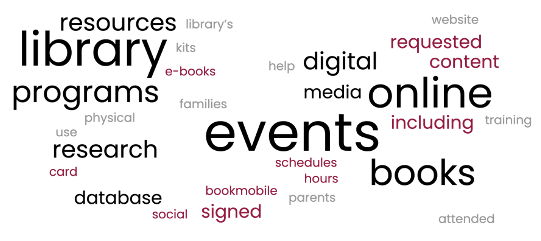
- Finding or accessing the information one needs can be difficult for many.
- Website users seek access to digital media and training from the library, as the libraries provide digital materials supporting community needs.
- Library users have different goals when visiting the library’s website, such as borrowing books or content, researching, looking up events, and getting help.
- Library users mostly sign up for events online.
- The more popular features of the library’s website are the events calendar and the research database resources.
- Most library users are parents of minor children who look to borrow books or attend kids’ programs and events.
- The second most popular library user is looking for technology and research materials and programs that support those interests.
Persona Development
Personas were created for the Sharon Public Library’s website based on the research findings to represent the Sharon, PA community’s traits, qualities, and goals.
Primary Persona 1
Represents the user looking for programs and entertainment for themself and their children.
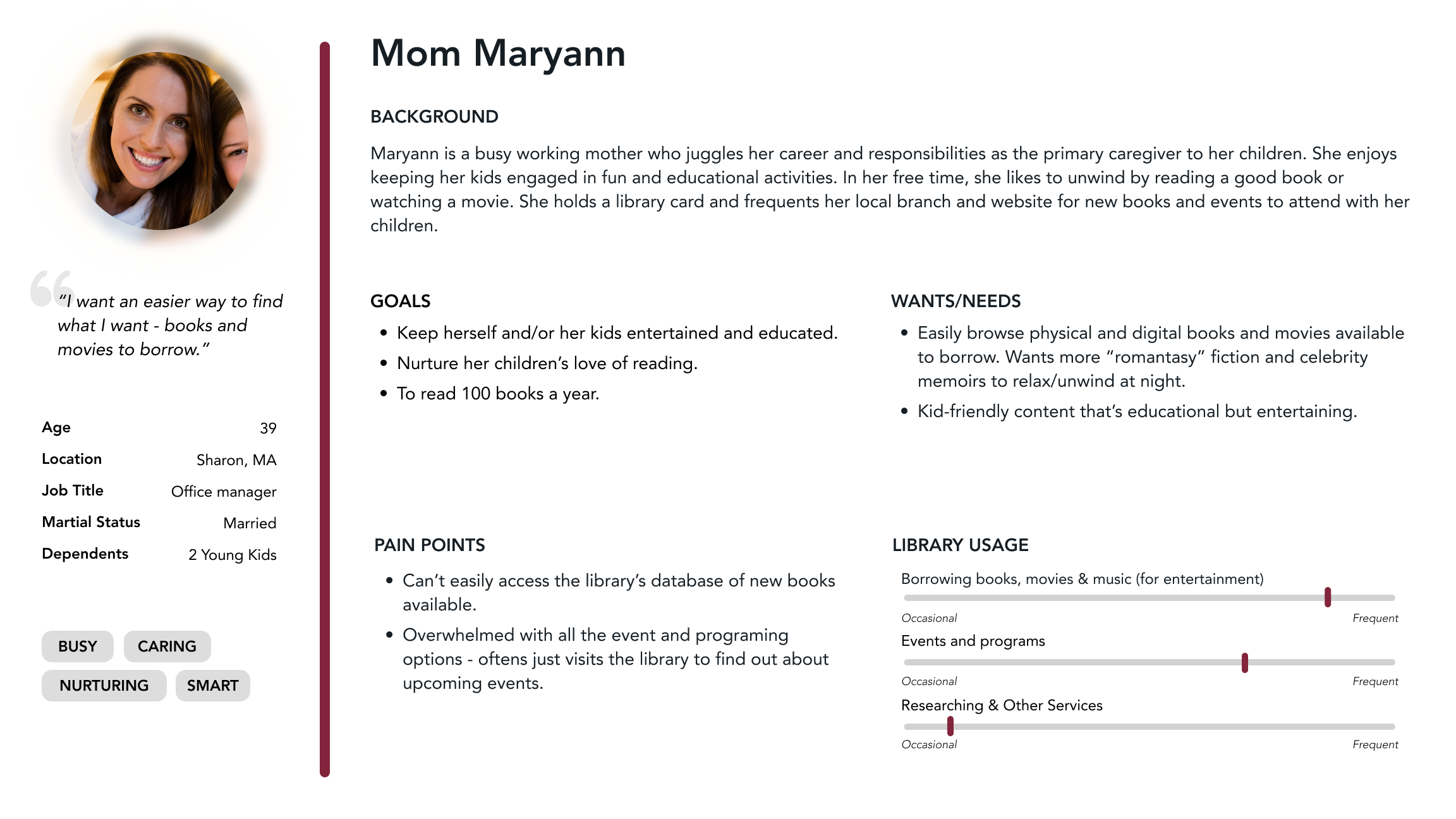
Primary Persona 2
Represents the user who enjoys researching and is interested in improving technology skills.
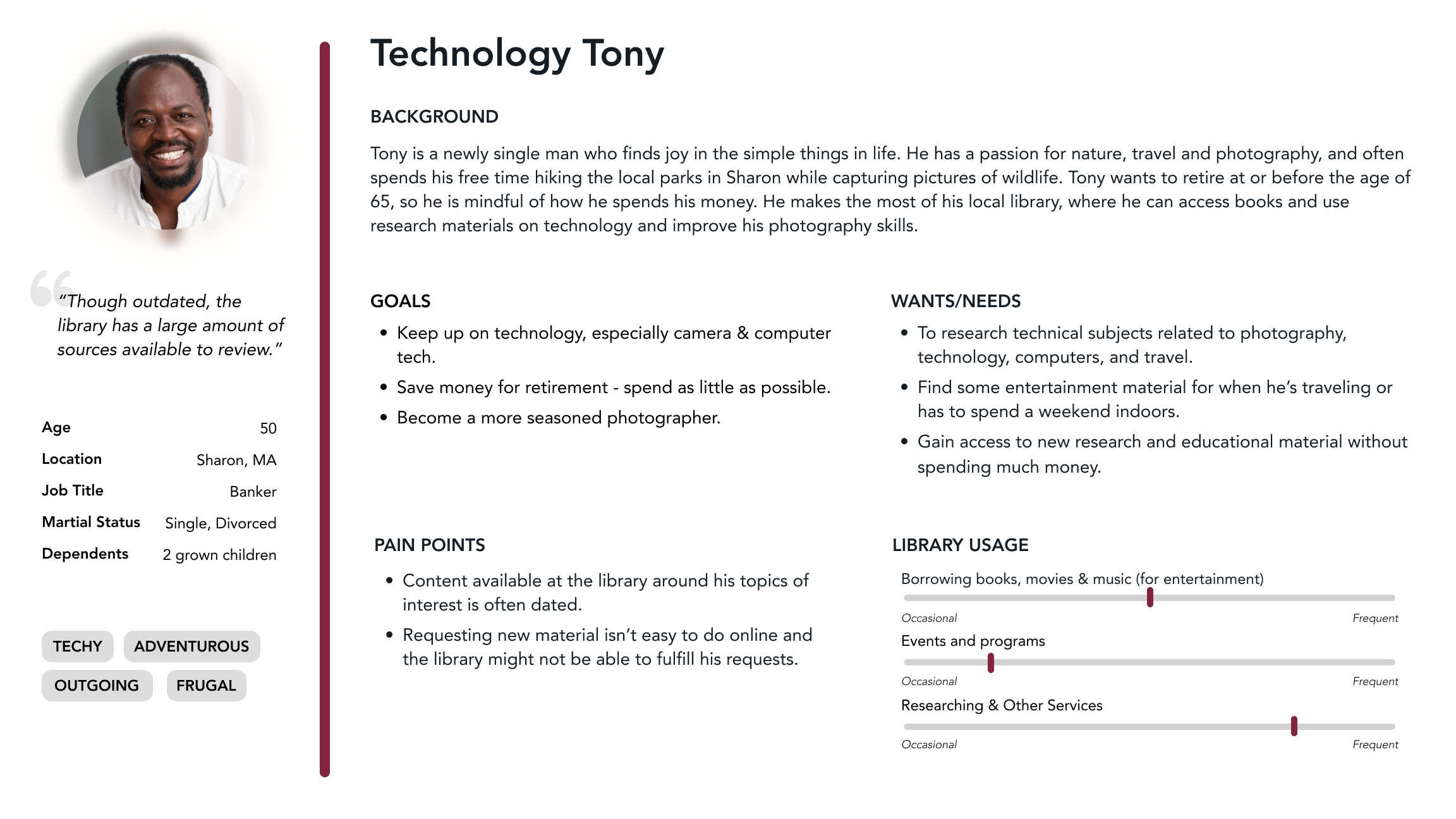
Secondary Persona
A smaller segment of users who utilize the library’s local historical and genealogical resources.
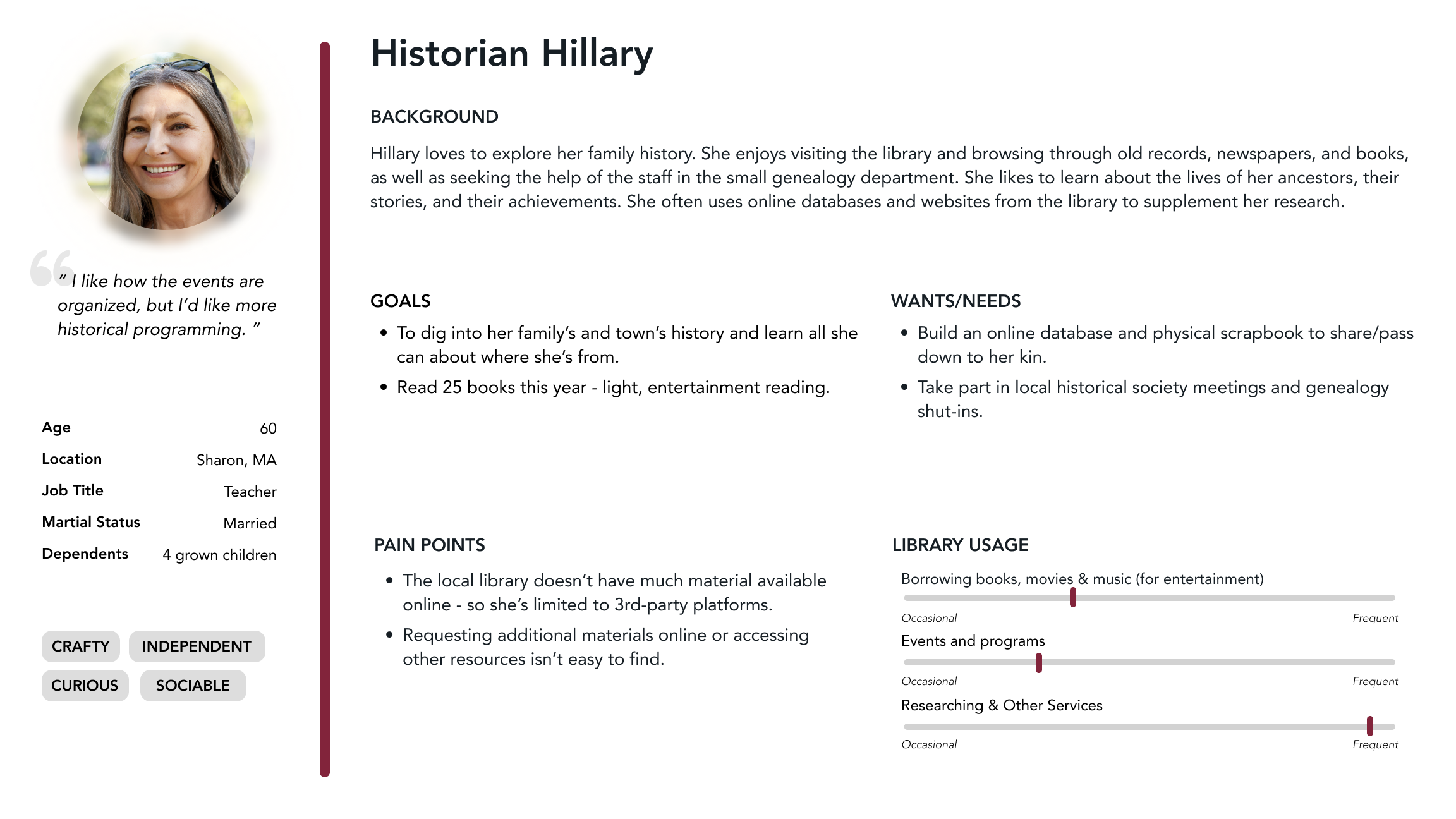
Task Priorities
After personas were developed, priority tasks were identified in order of importance based on each persona’s needs. These priorities were used to determine which information should be prioritized on the site’s navigation and page layouts.
| Mom Maryann (Primary) | Technology Tony (Primary) | Historian Hillary (Secondary) | |
|---|---|---|---|
| Higher Priority Tasks | Yes | Yes | Yes |
| Browse the catalog of content available in the physical collection | Yes | Yes | Yes |
| Reserve (or place a hold) on physical or digital content | Yes | Yes | Yes |
| Request physical content to be added to the collection | Yes | Yes | Yes |
| Find and sign up for upcoming events for adults | Yes | Yes | |
| Use an online research or reference database | Yes | Yes | |
| Lower Priority Tasks | |||
| Find and sign up for upcoming events for children | Yes | ||
| Look up library operation info (Hours open, location/directions) | Yes | Yes | |
| Renew a library card or content item | Yes | Yes | |
| Get help or support | Yes |
Content Analysis & Draft Sitemap
After user priorities were established, Sharon Public Library’s website was inspected and audited. The audit revealed an excess of content and resources, redundant links, and unclear page structures. It was recommended that content be consolidated, global navigation labels be updated, and borrowed materials be featured more prominently.
Additionally, semantic headings should be added, links labeled correctly, and popular and helpful links should be featured in the footer.
Using this analysis, a classification scheme was determined, and a sitemap draft (Figjam) was developed for sharonpubliclibrary.org. View full content analysis (PDF)
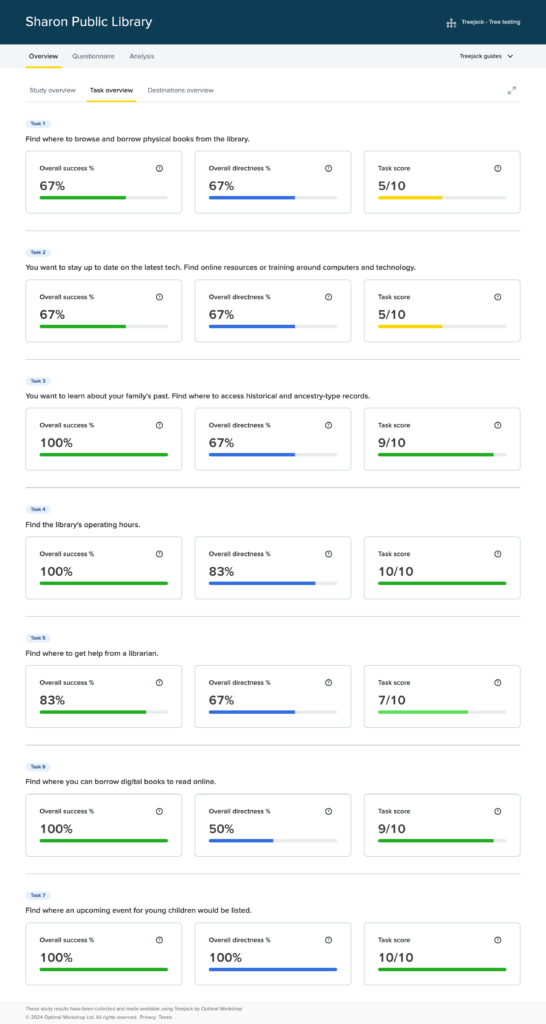
Testing
Next, the new sitemap draft was tree-tested to verify the effectiveness of the newly proposed website taxonomy.
Tree Testing
Seven primary tasks were added to a tree test using Optimal Workshop Treejack. 6 participants completed the study, and the average completion time was 3 minutes 34 seconds.
Findings
- 6 of 6 participants could find genealogy information, library hours, digital books, and upcoming events.
- 5 of 6 found out how to get help.
- 2 of 6 chose ‘Search site/catalog’ for computer training; 1 skipped the menu entirely.
88% of tasks were successfully completed. Minor changes were implemented into the sitemap, and wireframes were developed.
Sketched Wireframes
Wireframes were sketched based on priority tasks, sitemap design, and tree testing results.
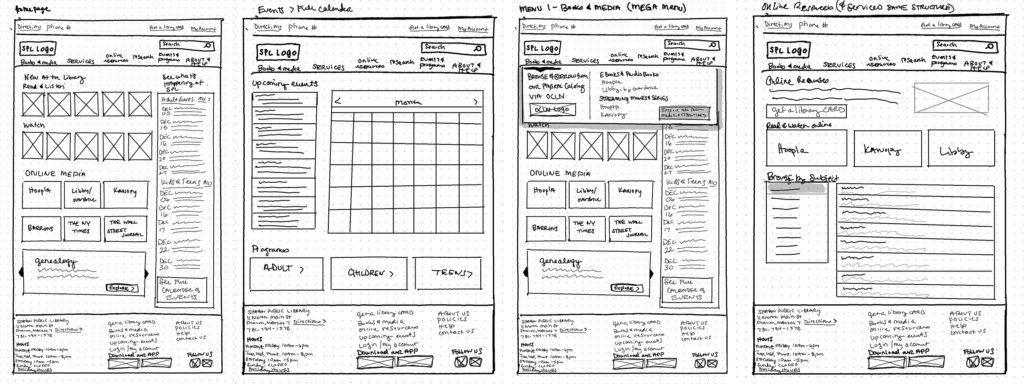
First-Click Test
Sketched wireframes were iterated into a digital format. Wireframes were uploaded for Chalkmark First-Click testing within the Optimal Workshop platform. The first-click testing technique measures and verifies the ease of completing a task on a website or application. The primary objective is to ensure that a user’s first click on an interface while carrying out a given task is straightforward. View full click test report (pdf)
Tasks and Results
| Test Tasks | Success Rate | Time on task |
|---|---|---|
| Task 1: You’re interested in borrowing a book from the library. Find where to browse physical books from the library. | 100% | 5.42 sec |
| Task 2: You’d like to borrow and download a digital audiobook to listen to on your phone. Where would you look for this option? | 100% | 3.15 sec |
| Task 3: You want to learn about your family lineage. Where would you look for historical and ancestry-type records? | 100% | 3.85 sec |
| Task 4: Where would you go to get assistance from a librarian? | 80% | 12.61 sec |
| Task 5: An author you like is coming to the library for a book signing. Where would you go to find more details and register to attend? | 100% | 4.36 sec |
| Task 6: You need to return some books tonight to avoid late fees. Where would you go to see when the library closes? | 60% | 9.46 sec |
| Task 7: You just moved and want a new library card from the local library. Where would you click to apply for one? | 100% | 2.93 sec |
91.4% of tasks were completed by five participants clicking within success-criteria areas.
Finalized Deliverables
After conducting thorough testing and validation, the finalized wireframes (Figma), along with a fully reworked sitemap (Figjam), were presented and delivered to the client.
Conclusion
The Sharon Public Library website is vital to connecting with its patrons and community members. Developing and implementing a simpler information architecture is crucial to ensuring that the library’s digital ecosystem is practical, user-friendly, and aligned with user objectives.
Through research, content consolidation, and testing, the sitemap and overall organization scheme of sharonpubliclibrary.org were adjusted to better align with the users’ needs. Sticking to and implementing the recommendations outlined above can significantly improve Sharon Public Library’s site design.
Once these recommendations are effectively incorporated with a new site design, sharonpubliclibrary.org will likely produce high user satisfaction and task success rates, thereby improving the overall experience of library patrons.
Note: Sharon Public Library did not commission this information architecture analysis.
Got a similar project?
Contact me to see how I can help!


